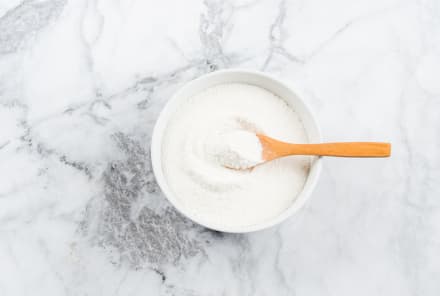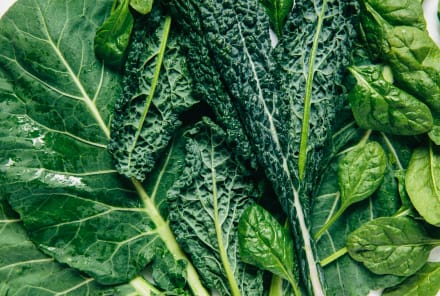Advertisement
Why You Can Find This Herbalist Sipping Hibiscus Tea All Summer Long


Seasonal changes are a time of transition—and it's not always easygoing. Emerging from hibernation—of winter, of working from home, of being overall more in and within ourselves—to the social scene that is summer brings with it a process of peeling back (and off) the layers, re-embodying our evolved identity, and being anew.
Transitions of any kind are also great opportunities to create change in a routine. In my practice, I'm very often working with clients and community members on redesigning habits. That is, breaking unwanted cravings, habits, and dependencies and charting new ones.
I've found that cravings drive a lot of lives. And they can make us feel outwitted, victimized, discouraged, and undermined. One of the best ways to gain the upper hand with cravings is to replace them with something similar but preferable. Slowly, over time, we can transition further from what's hindering us and closer to where we want to be.
One of my favorite herbs for charting a healthier path during this time of year is hibiscus. This herb is one of my staples for redirecting cravings because it's sweet and tart, which satisfies many flavor receptors. It's also something we can sip on throughout an entire afternoon, it's easy to find or make, and it's doing double (or quadruple) duty by both replacing a treat-calling while delivering all of the fairly major benefits below.
Why I love hibiscus for summertime.
Native to parts of North Africa and Southeast Asia, Hibiscus sabdariffa is a shrubby tropical plant that blossoms rich-red calyces (the outermost part of a flower), which are used traditionally in beverage preparations for a whole host of health conditions.
Hibiscus flowers have been used in traditional medicine in India, China, Thailand, Jamaica, Africa, Hawaii, the Middle East, the Philippines and beyond.
Often, hibiscus is popular in summers and as an iced preparation. The rumors about it helping to cool down the body are true. In Egypt and Sudan the tea, called karkade, is popular as a "refrigerant"—that is, a beverage that helps lower body temperature. In Ghana, it is prepared as a cooling sobolo drink. (For a taste of tradition, watch this video showing its preparation, which I found by way of the Center for Plants & Culture.)
Modern applications are informed by plenty of research that confirms its benefits on heart health and metabolism, allergies, urinary tract balance, and yes—more.
Research shows that hibiscus can be used to help ease mild hypertension (it acts as a gentle diuretic and vasorelaxant) as well as imbalanced blood sugar and cholesterol levels. An extract of the flower was also shown to reduce waist circumference/body fat ratio and waist-to-hip ratio1 in people with obesity, making it a promising adjunct treatment for metabolic syndrome2.
Another reason to love hibiscus in warm-weather seasons is its anti-allergy action. Hibiscus has been shown to stabilize mast cells3 (cells that contain immune chemicals like histamine, heparin, and cytokines), which minimizes overactive allergic responses to irritants in general. (If you're the sensitive type, this is for you!) Sip it preventively (think six weeks ahead of seasonal allergies, for example) or as needed when the sneezing strikes. Regular consumption of hibiscus tea can help reduce histamine production, and the herb works well in blends (look for turmeric, licorice, and functional mushrooms) to balance allergies and lower the overall inflammatory load.
As if those weren't enough reasons to love it (you see why I'm married to herbs?), hibiscus can be hugely helpful for urinary tract balance4. This is due to its soothing diuretic actions. (A soothing diuretic is more gentle and nourishing than others that can strip our systems of good bacteria or hydration. Many herbs are soothing and nourishing diuretics that replenish and rebalance nutrients as they move through.) Hibiscus has even shown promise in protecting against the development of kidney stones5.
Last but not least, hibiscus is practically electric with its glowing anti-inflammatory and antioxidant flavonoids and phenolics, plant compounds we want lots of in life.
How to prepare it.
The best way to get the most of those anti-inflammatory and antioxidant anthocyanins is by making a tea. Simply steep the flowers for 15 to 20 minutes and drink up to 24 ounces per day. Store refrigerated.
In terms of sourcing, as with all herbs (and food, supplements, and other things we consume) being intentional about your provider is ideal. When possible, buy from folks with transparent, ethical, and environmentally respectful processes. I love Burlap & Barrel's Desert Hibiscus, which is "grown by an extended family of farmers in an ancient agricultural community in central Egypt, on the Nile River flood plain, where spices have been cultivated for many, many years." Mountain Rose Herbs also offers hibiscus in several forms.
The takeaway.
If its vibrant color isn't convincing enough (thanks to the anthocyanins), take history and science's word for it: Hibiscus is a wonderful herb to sip in summer as a refreshing, cooling tea with a functional kick.
Watch Next
Enjoy some of our favorite clips from classes
Enjoy some of our favorite clips from classes
What Is Meditation?
Mindfulness/Spirituality | Light Watkins
Box Breathing
Mindfulness/Spirituality | Gwen Dittmar
What Breathwork Can Address
Mindfulness/Spirituality | Gwen Dittmar
The 8 Limbs of Yoga - What is Asana?
Yoga | Caley Alyssa
Two Standing Postures to Open Up Tight Hips
Yoga | Caley Alyssa
How Plants Can Optimize Athletic Performance
Nutrition | Rich Roll
What to Eat Before a Workout
Nutrition | Rich Roll
How Ayurveda Helps Us Navigate Modern Life
Nutrition | Sahara Rose
Messages About Love & Relationships
Love & Relationships | Esther Perel
Love Languages
Love & Relationships | Esther Perel
What Is Meditation?
Box Breathing
What Breathwork Can Address
The 8 Limbs of Yoga - What is Asana?
Two Standing Postures to Open Up Tight Hips
How Plants Can Optimize Athletic Performance
What to Eat Before a Workout
How Ayurveda Helps Us Navigate Modern Life
Messages About Love & Relationships
Love Languages
Advertisement

This Little-Known Supplement Helps Women Sleep & Decreases Signs Of Depression
Molly Knudsen, M.S., RDN

Want To Be Metabolically Healthy? New Study Shows An Underutilized Approach
Molly Knudsen, M.S., RDN

This Little-Known Supplement Helps Women Sleep & Decreases Signs Of Depression
Molly Knudsen, M.S., RDN















